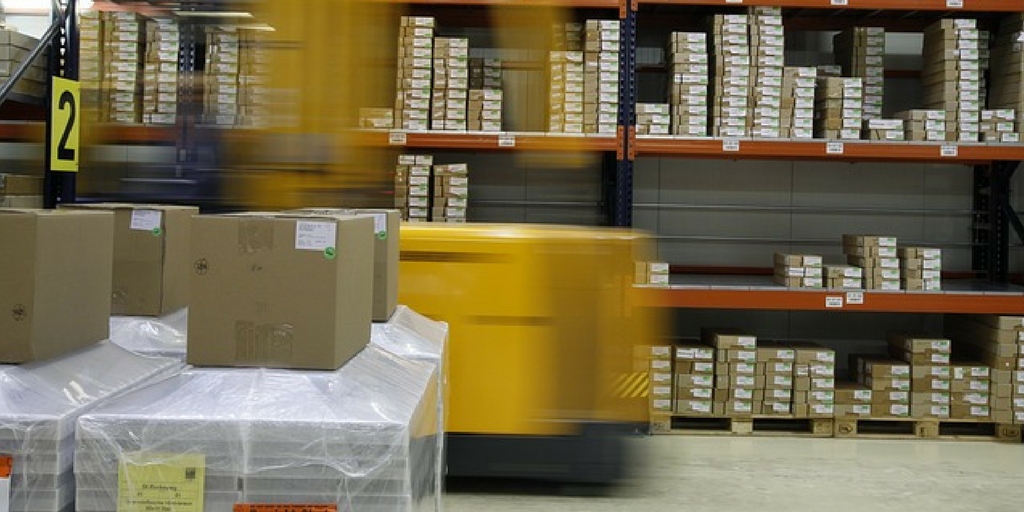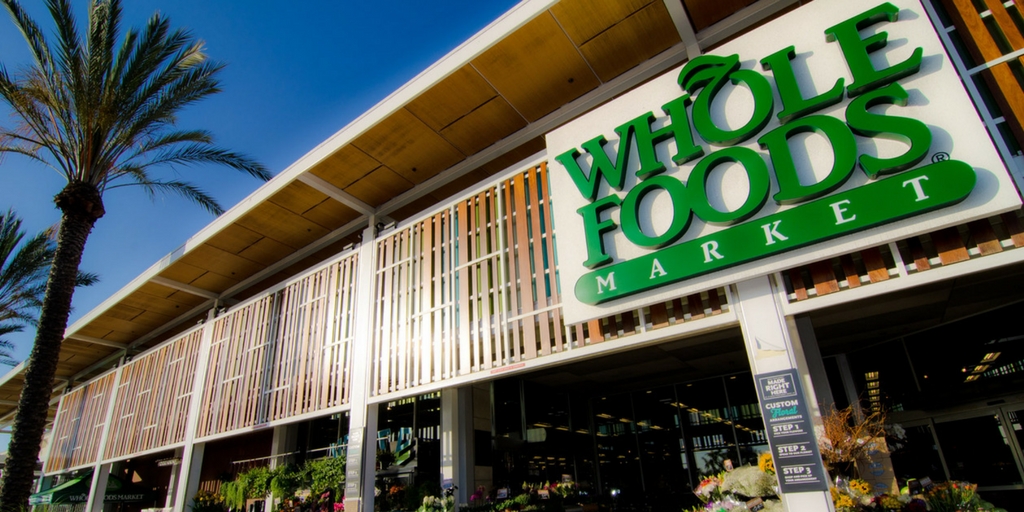
by Fronetics | Dec 14, 2017 | Blog, Logistics, Supply Chain
Here are our most-viewed blog posts from 2017 about the supply chain and logistics industries, including posts about some of the largest supply chain companies in the world, Starbucks and Amazon.
Throughout the year, we write innovative posts to help readers stay in the know with the latest news and happenings to the supply chain & logistics industries. These posts provide insightful and relevant information from thought leaders, current trends, and tips to stay ahead of your competitors. Here’s a look at our most popular posts from this year.
Here are our top 10 supply chain and logistics posts of 2017.
1. Supply Chain Putting the ‘Star’ in Starbucks
Starbucks’ closely managed supply chain may be the key to the premium coffee giant’s success. The international coffee giant has widely studied and acclaimed supply chain management practices, which, according to some, make Starbucks’ coffee and customer experience superior to those of its competitors. Read more.
2. 8 Must-Follow Logistics & Supply Chain Blogs for 2017
Supply chain professionals should be following these eight blogs to keep up with the latest industry news and happenings in the coming year. They cover a range of topics, from technology to strategy, and feature thought leadership by some of the brightest minds in the field. Read more.
3. Top 5 Trends to Know to Compete with Amazon’s Supply Chain
Supply chains must accept that they cannot equal the power of Amazon’s supply chain without embracing new trends. While supply chain entities struggle to stay competitive with the e-commerce giant, more organizations will look for ways to eliminate inefficiencies and boost operations. Fortunately, these five trends may alleviate some of the strains of competition by giving supply chain partners an advantage in the global market. Read more.
4. 5 Podcasts for the Supply Chain and Logistics Professionals
These podcasts bring the latest news and thought leadership in the supply chain and logistics industries right to your earbuds. Podcast’s popularity has skyrocketed since the smartphone became as necessary as car keys, giving you to-the-minute facts and information, right in the palm of your hand. If you’re looking to increase your podcast listening, here are five that highlight topics of interest to supply chain and logistics professionals. Read more.
5. What’s the Difference between Supply Chain Management and Logistics (Infographic)
Argentus’ infographic sheds light on the differences between these often-confused functions. Both Logistics and the wider Supply Chain are vital to how companies run today, but the two are still so often confused. We put together an infographic outlining some of the key differences and points of overlap between them. Read more.
6. 5 Books Every Supply Chain Professional Should Read
Add these books to your reading list to stay on top of industry trends and jump start your professional development. Read more.
7. What are the Supply Chain Impacts of Amazon’s Whole Foods Acquisition?
Amazon’s foray into the grocery space has larger implications for its overall strategy, and the possible benefits for the eCommerce goliath are diverse. Big news out of the grocery retail world as Amazon has announced its acquisition of major organic foods retailer Whole Foods Market – for an eye-popping $13.7 billion sale price that doesn’t look so massive given Amazon’s $136 billion sales volume in 2016. Read more.
8. Packaging Trends to Watch in 2017
Will sustainability trends from the consumer packaging industry have an impact on electronics manufacturing this year? Packaging trends suggest a wide range of startups, researchers, and big companies are committed to finding solutions that match the buzzwords du jour — sustainable, bio-degradable, natural, and eco-friendly. Read more.
9. The Top 3 Logistics and Supply Chain Blogs for 2017 – Readers’ Choice!
Our readers voted Morai Logistics, Women in Trucking, and the Oracle Supply Chain Management Blog as the top 3 logistics and supply chain blogs of 2017. Every year we ask our readers to vote for the best industry blogs. The results are always interesting — there’s really a lot of great supply chain and logistics content out there, plus it’s great to see where our readers are finding value. Read more.
10. The State of Supply Chains: The Supply Chain Has Gone Digital (Infographic)
2016 was the year of the digital supply chain — here’s a look at how things changed. The digital transformation has already reached most supply chain organizations. Per GT Nexus, 75% of executives surveyed recognized the digital supply chain as an important factor for the next five years. Read more.
Related posts:


by Jennifer Hart Yim | Jul 26, 2017 | Blog, Current Events, Logistics, Strategy, Supply Chain
Amazon’s foray into the grocery space has larger implications for its overall strategy, and the possible benefits for the eCommerce goliath are diverse.
This guest post comes to us from Argentus Supply Chain Recruiting, a boutique recruitment firm specializing in Supply Chain Management and Procurement.
Big news out of the grocery retail world as Amazon has announced its acquisition of major organic foods retailer Whole Foods Market – for an eye-popping $13.7 billion sale price that doesn’t look so massive given Amazon’s $136 billion sales volume in 2016.
Analysts across the retail industry are talking about the huge implications of this sale for a retail industry that many say is in the middle of a major meltdown, in part owing to Amazon’s massive growth in the eCommerce space. This foray into the grocery business is a big challenge to companies like Target, Wal-Mart, and others, and also a sign that reports of brick and mortar retail’s demise might be greatly exaggerated.
Anyone following the industry probably isn’t completely surprised by the acquisition, which serves as another example of Amazon’s constantly widening footprint across all aspects of Supply Chain. It follows on the company’s gradual conquest of the logistics space over the last few years, including the licensing of 20 Boeing 767 air cargo jets, the acquisition of wholesale shipping licenses, and forays into trucking. It shouldn’t be so surprising that the company is seeking to put one of the final puzzle pieces in place towards a completely vertically-integrated retail Supply Chain by buying brick and mortar stores – while also buying a major staging ground to improve its last-mile logistics, which is often said to be the “holy grail of eCommerce.”
It all fits into analysts’ understanding of Amazon’s quest for world domination.
That being said, the specific acquisition of a healthy lifestyle brand like Whole Foods is intriguing for sure. This is a brand with major goodwill and solid growth as consumers have looked to healthier choices over the past several years, so it makes sense from that perspective. But as many outlets have reported, Amazon’s foray into the grocery space has larger implications for its overall strategy, and the possible benefits for the eCommerce goliath are diverse. As Supply Chain 24/7 put it, this move is more than a disruption to retail – it could be a disruption to all of society.
Woah.
So let’s dive in: what is Amazon’s medium and long game with this acquisition? What are the possible benefits to the company and the potential disruption?
- Amazon gets to reap the sales of a popular and upscale grocery brand.
- It brings Amazon a step closer to perfecting its last-mile delivery strategy, which has been difficult to execute for high-turnover perishable items like groceries.
- It expands the company’s distribution network, adding 440 refrigerated warehouses within 10 miles of 80 percent of the population.
- It allows Amazon to place pressure on food suppliers’ profit margins by being even larger.
- It obviously gives the company more physical, brick and mortar presence, which allows it to eliminate some of its disadvantages compared to brick and mortar chains – for example the fact that people shopping online on Amazon can’t try on clothes or select fruit. The company has already dipped its toe into the brick and mortar waters with its Amazon Bookstores, now up to eight locations, but this represents a full-blown cannonball into that space, selling way more than just books.
- It allows the company to digitize the strongest parts of Whole Foods’ brick and mortar experience, adopting a hybridized approach at the same time as Wal-Mart looks to become more like Amazon.
- It allows the company a larger testing ground for its Amazon Go app, which allows customers to pay for grocery goods using a smart phone without ever interacting with a checkout counter. This has negative employment implications, obviously, for retail workers long-term.
- It gives the company more “touch points” with shoppers and avenues to sell higher-margin goods such as Kindle devices in grocery stores.
- It also delivers a massive new client to Amazon Web Services, a client who is currently using Microsoft’s Azure Cloud platform.
- It puts a number of Amazon’s biggest retail rivals on notice, including Target, Wal-Mart, and others, that they can expect more price competition.
When this move was reported, it sent stocks for Canadian grocery companies into a conniption, with some companies losing 3.5% of their value in a day’s trading. American grocery companies didn’t do much better, with Target, Walmart and Kroger all losing value as well. Whatever the outcome, it looks like this year’s retail industry upheavals might just be a taste of what’s to come.
This post originally appeared on the Argentus blog.
Related posts:





